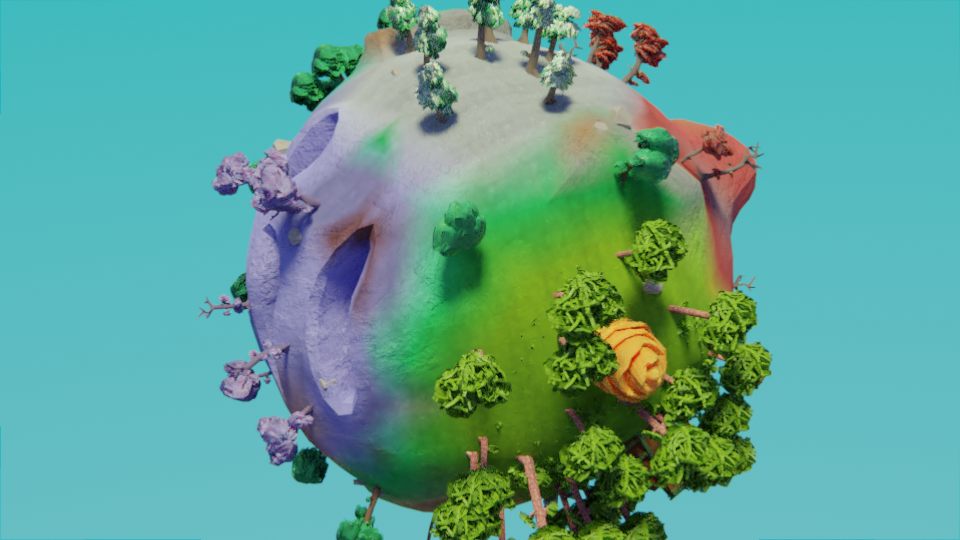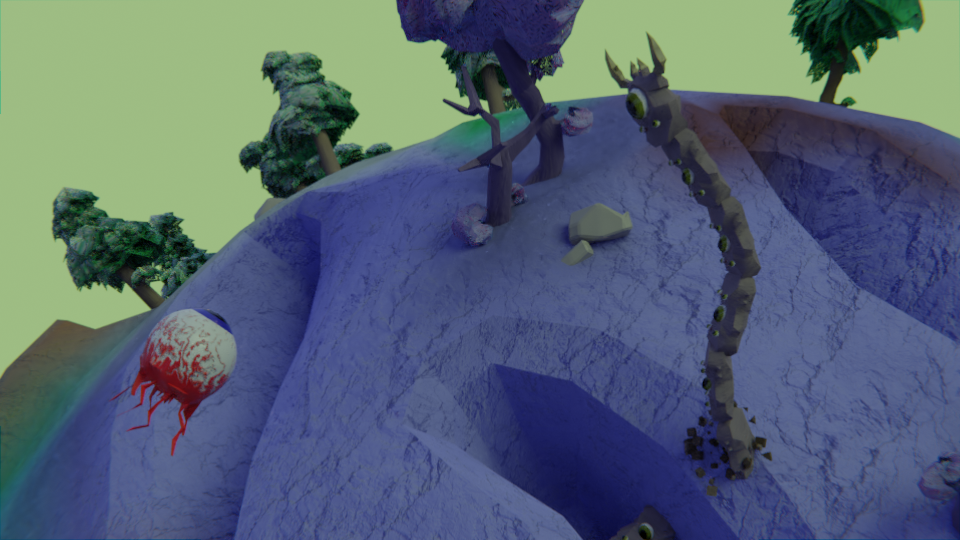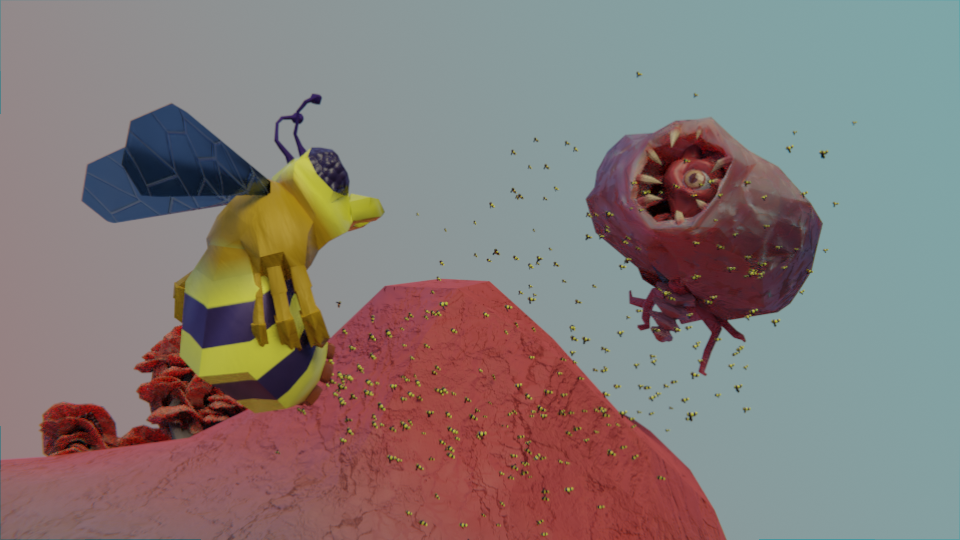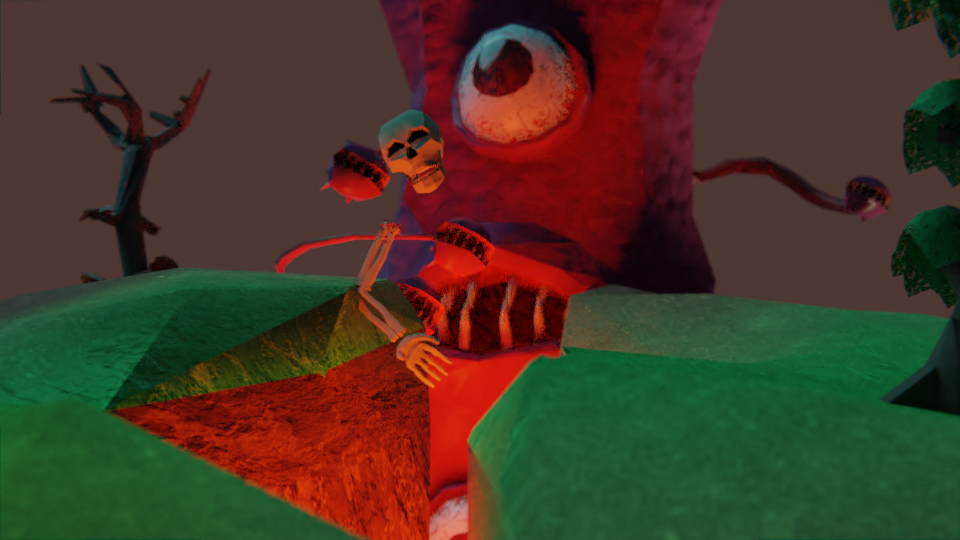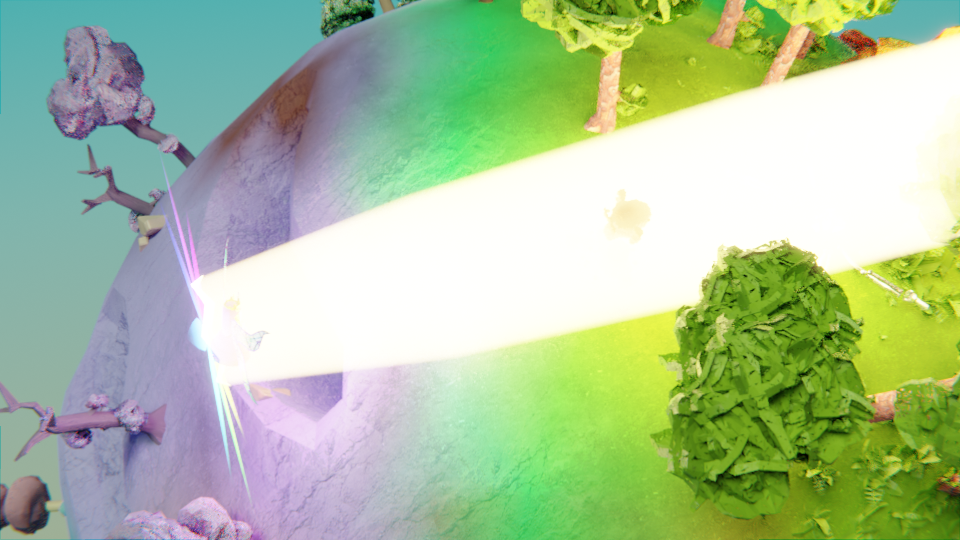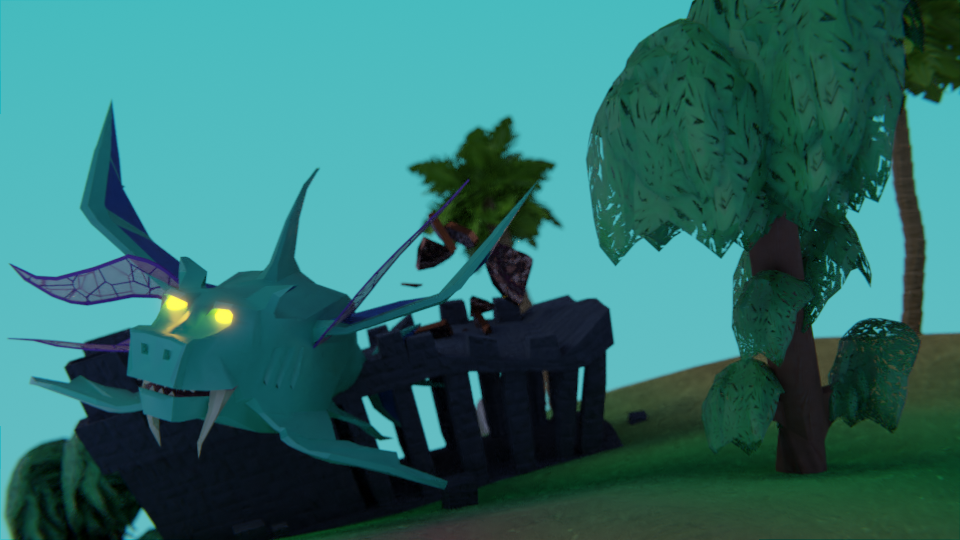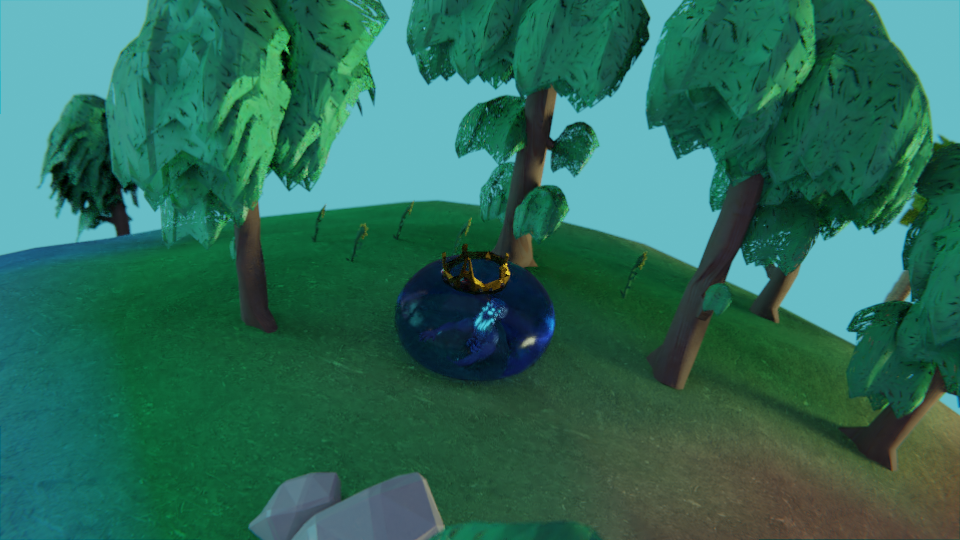Whilst some of the more sensitive among us may feel guilty for bringing chaos to the pristine beauty of Terraria’s forests, this footage shows that the bosses duke it out amongst themselves quite regularly. The mayhem was filmed as a Royal Rumble fighting event, who will come out with the title crown?
This is the culmination of a year-long love letter to one of the greatest games of our generation. It was time to re-live the grownup version of fighting with your action figures: putting all the Terraria bosses previously modelled in their own worlds into the same arena and have them battle it out.
The World of Terraria
Modelling backgrounds is one of the most tedious parts of animation, it is underappreciated and time consuming. If done well, it doesn’t draw attention to itself, if done poorly, it breaks immersion: it’s a lose-lose. So, instead of keeping the blocky style of the previous boss videos and trying to make it look passable, it would be better to make the background almost a character in its own right.
Thus, I modelled Terraria as a miniature planet with most of the major biomes in the game represented, as a background scene to the rest of the scenes. The moon was only included in the fight scenes and put into view when it made sense.
Texturing
The model used several vertex colour groups within a single material. The vertex colours controlled:
- The locations of dirt vs grass (black and white)
- The colours of the grass (coloured, two groups, one includes the Hallowed grass)
- The colours of the rock (coloured)
- “Hardmode mask” (black and white, this controls the location of the Hallow after the Wall of Flesh)
A mix shader was then keyframed to switch to the Hardmode mask and colours when it corresponds to the appropriate scene.
To texture the ground cover, the same grassy texture was used but was mixed with a copy of itself with a noise texture mapped to a different scale and displacement with the “Mapping” node. This is a quick way to remove tiling.
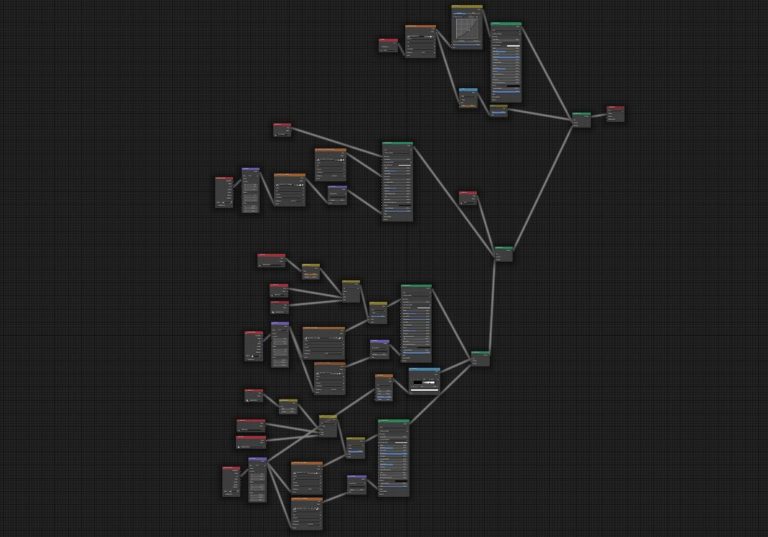
Trees, Plants, Rocks
Trees were made with low poly trunk meshes with a particle hair system emitting simplified foliage meshes with alpha-textured leaves. The trees were duplicated and then grouped under collections for each biome. Additionally, sunflowers are included in the forest, undergrowth (modelled with a hair particle system) is included in the jungle, and small stones are scattered around the planet.
Major Structures
The outcrop of the dungeon is modelled here as a simple, pillared fort, located near the ocean. Because there is no underground in this world, the bee hive and jungle temple were modelled to be on the jungle surface, the latter taking the shape of a Mesoamerican pyramid.
The evil biomes were partially modelled with their features: canyons/ravines for the corruption, and the top of the cavern for the Crimson.
The Underworld
When Skeletron dared accidentally slay the guide, the world opens up with the Wall of Flesh emerging from the fiery depths of the underworld. This effect was done using a shape key on the world’s mesh, and thus was keyframed to coincide with the appropriate scene.
Battle Scars
The background is dynamic, so the battle leaves a permanent mark on the world. This generally happens by either:
- Controlling visibility of a separate static mesh where the boss has been defeated (Destroyer, Skeletron Prime)
- Addition of a decal to the world texture (Golem)
- Deformation of a mesh via shapekeys (Queen Bees damage to the hive, Duke Fishron’s damage to the dungeon)
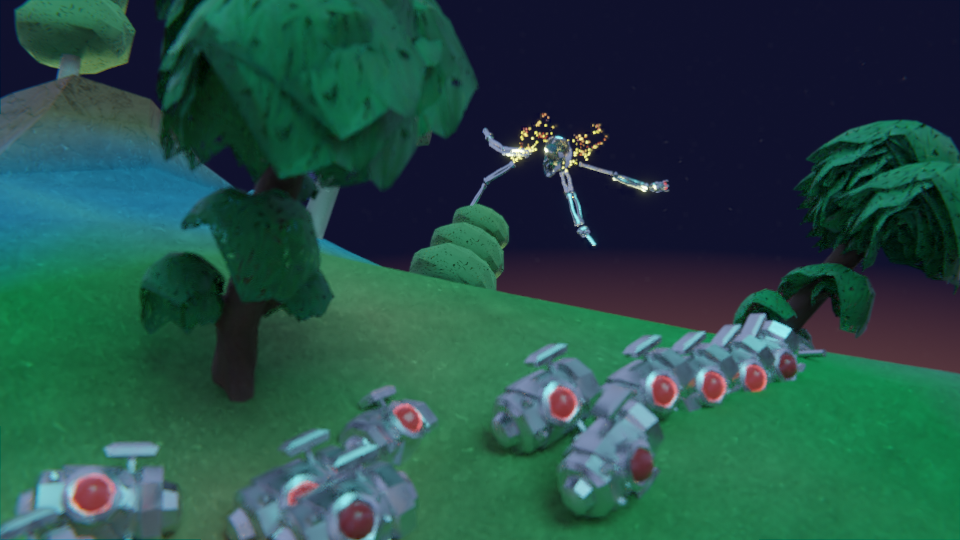
Lighting, Rendering, Compositing
The background scene has no lighting so the exact appearance of each of the fight scenes can be tightly controlled. Each scene has its own object lights, and also its own World. The worlds have HDRI lighting for realistic reflections and shadows, plus with colours and gradients mapped to the camera light path so the local time of day at each battle can be controlled.
Rendering was done with Cycles at 72 samples, with some minor denoising, and glare and chromatic aberration added in the compositor. When the video was composited together, the noisy frames were placed over the denoised frames at a low opacity so that the texture detail would not be fully lost (as is often the case with denoising). Test renders (and there were many) were done in Eevee to save time to correct any errors.

Effects
Most of the visual effects were done internally in Blender (particle effects, lighting, lasers, Brain of Cthulhu’s transparency etc) to minimise the work done in post-production. The only affects added in post-production were:
- The text, indicating why the Wall of Flesh and Empress of Light were summoned.
- Strong glare and light rays added to the sun in the opening scene (with sunglasses!)
- The Empress of Light’s dodge move was done by layering a render pass of just the boss with a transparent background with a time offset.
Music and Sound
The tracks from Terrarian State of Mind were mixed to make the musical score. They generally follow the same order as the bosses they are associated with, with some exceptions, such as “Call of the Moon Lord” played in the beginning, and “Why do I Hear Boss Music?” played during the Eye of Cthulhu’s fight. Not all the tracks have the fast-paced tempo required to match the action, so there are some omissions. The tracks were then mixed down into a single track for the score.
A separate track was then mixed to include the sound effects of the battle on top of the score. The score channel was loaded with a compressor that would duck when it receives a sound effect, so the sound effects would cut through the music. Each sound effect was mixed into its own channel and then sent to a reverb channel, so all the sound effects will sound like they’re in a cohesive atmosphere. This reverb channel is sidechained to the score channel and is what ducks the music.
The sound effects were added by combing through the video frame-by-frame and adding the sound effects into the exact frame where it was supposed to play (this took a couple of tries). Panning, volume, and stereo-separation were automated with envelopes to match the action in the video.
Some cool sound effects were:
- Panning of the sun’s (fire sample) sound in the intro, laser fire in the Twins fight, and the chains of Golem as his fist flew across the screen. Subtle, but adds to the atmosphere.
- Ambience was added to forests (bird songs), night-time (cricket chirps), and the jungle (sound of a waterfall).
- The tunnelling sound effect was made by adding a volume LFO to a running water sample. This is similar to the tunnelling sound of worms in Terraria.
- Duke Fishron’s call was made by mixing a pig snort and a whale call.
Conclusion
The mayhem of this video has been my largest project to date by far and is a fitting love letter to one of the greatest video games of our generation. The sheer amount and diversity of techniques used (vertex colours, shape keys, armatures, sound mixing, visual effects etc) is huge, and not always apparent when looking at the 5 minute runtime of the final video. But it is the culmination of nearly a year’s worth of work when considering the original boss models and the Terrarian State of Mind soundtrack.
This will be one of the last major fan projects for a while as I will begin to shift focus onto original content. Thank you for reading if you have been following along this far! Check out some of the outtakes below (SPOILERS: make sure you watch the video first)!
